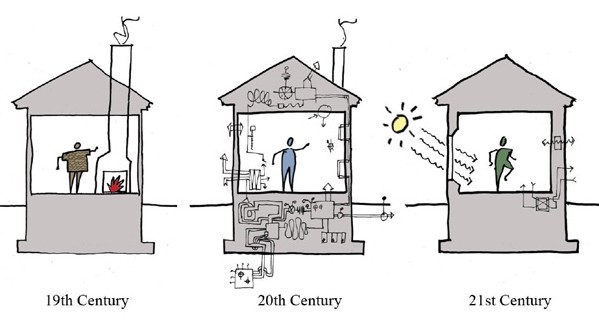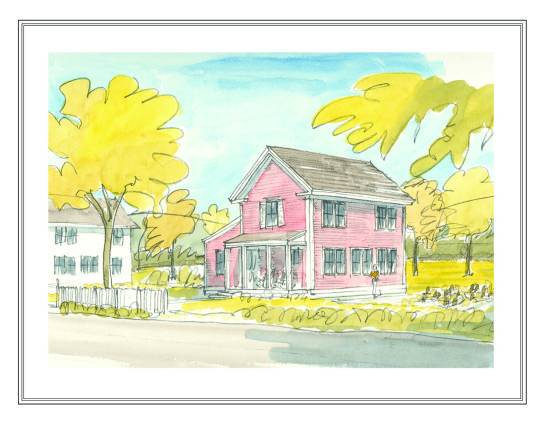I write about Passive Houses a lot. I think it’s time to provide some background on how this efficient-building standard compares with others.
Passivhaus may look like a funny spelling, but actually it’s just a normal spelling, in German, a language in which “haus” means building, not house. Passivhausen can be schools, offices, anything.

“A building so well insulated that it needs no heating or cooling systems” could be called the philosophical definition of a passive house (PH).
In reality, nearly all PHs do have heating systems. The philosophical goal is not too hard to attain in parts of California; for that matter, there are climates so equable that traditional housing never had heating or cooling systems. But in central Europe and most of the US and Canada, PHs have some kind of heat input on tap for some times of year. The Passivhaus Institut (PHI) defines a PH as maintaining thermal comfort with its ventilation system alone—heating and cooling only the amount of air you need to replace anyway for air quality reasons in an airtight house.
It’s often said that a hair dryer would be enough to heat a PH—an exaggeration, usually, though the heat from appliances and human bodies is a very significant input in a PH. Depending on locale, PHs typically use only one-tenth as much energy for heating and cooling as houses built to current codes standards.

The PH standard sets firm maximum numbers in three categories: total heating and cooling demand per square foot; total energy demand (including lighting and appliances) per square foot; and total air leakage. Meeting the PH airtightness standard is more a matter of art than of software. It takes top-notch materials for taping and sealing and great diligence in applying them. Practice helps, too. Many crews have failed the notorious blower door test and had to go back and re-seal and re-tape, then try again.
Comparing it to LEED, PH focuses narrowly on energy use, whereas LEED gives points for things like non-toxic paint, FSC-certified wood, and recycling of construction waste. LEED looks at energy considerations in the design, but then does not test the building’s actual energy performance. Overall, LEED doesn’t demand as much when it comes to saving energy.
Closer kin to PH are the Net Zero standard and the Living Building standard. PH looks only at energy demand; Net-zero Energy compares energy demand with energy produced on the lot (by solar panels, for example). Living Building Challenge looks at pretty much everything, including Net-Zero Water as well as energy—but still may tolerate a little more energy demand than PH will, as long as the demand is met with energy production on site.
The PH argument against the others is, you could get to Net Zero by putting a coal-burning power plant in the back yard, but that wouldn’t make the place “green.” You can put solar panels on your roof, sure, that’s a green way to generate electricity, and many of us do so, but that still doesn’t reduce the importance of designing a building that doesn’t need much energy.
In principle, these three “green building” standards work hand in glove. Many PH owners do add solar panels because they also want to achieve Net Zero; and so on. Interestingly, there is a Net Zero critique of PH that says the PHPP ignores cost-benefit ratios, and may tend to distract architects away from them. PH houses employ numerous insulation upgrades, of which most are cost-effective and some much less so, even if energy prices rise a lot during the house’s lifetime. According to this critique, it would make more sense to omit upgrades that don’t pay for themselves reasonably soon. With today’s subsidies and low prices for PV panels, adding PV panels often looks like a better deal that some of the PH upgrades.
The PH standard is also criticized for measuring energy demand per square foot rather than per capita. It favors larger buildings over smaller ones, both because it ignores the carbon that goes into materials and construction, and because as any geometric shape gets bigger its surface-to-volume ratio drops, and surface area is where a building loses heat. Defenders of PH say that simply reflects reality; they hope it will nudge small dwelling projects toward becoming multi-family buildings rather than McMansions.